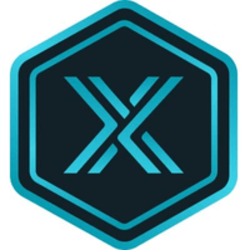- There are many peculiarities that separate crypto from TradFi (traditional finance), and that can be challenging when new traders enter the arena.
- At the top of the list must be the concept of tokenomics, i.e., the demand and supply characteristics of a crypto project.
If you trade or invest in stocks, you generally just look at the performance of the underlying company or the wider economy’s impact on the market. In crypto, you must understand tokenomics.
What are tokenomics? Effectively, they are the micro—economy of a cryptocurrency project, dealing with the number of tokens in circulation, the maximum supply of tokens, and, where possible, the schedule of token unlocks (something we will deal with a bit later). So we can do simple math: The number of tokens multiplied by each token’s value will give you the total market cap of that project.
If you are learning how to trade cryptocurrencies, then looking at Bitcoin is the easiest example to understand tokenomics. Bitcoin has a circulating supply of 19.62 million BTC (today), and its maximum supply is 21 million BTC. We know more BTC enters the market via mining. But with the Bitcoin halving (the next one is due in April), the reward for mining decreases, so there is less pressure on supply.
Bitcoin’s tokenomics are uncommon
Bitcoin’s tokenomics are pretty well known. Indeed, they form a large part of its attraction. However, they are, in fact, atypical of the crypto industry. We can point to projects like Shiba Inu, which initially had a supply of one quadrillion tokens. Now, many of those tokens were burned (sent to a dead wallet so they no longer enter the market), but there are still around 590 trillion Shiba Inu tokens in circulation. So, despite what you might hear from some crypto influencers on YouTube, there is no way that Shiba Inu will reach a figure like $1 per token – there is simply not enough money on the planet.
Shiba Inu is arguably at the extreme end of the market when it comes to tokenomics, but we can look at others that are less stark, notably Chainlink. Chainlink is a cryptocurrency project that works to link together disparate private and public blockchains. It has been gaining a lot of traction recently due to its partnership with SWIFT and major banks, with many believing the LINK token will be key to bringing the world banking system onto the blockchain.
There is a maximum supply of one billion LINK tokens, of which 587 million are in circulation. So, LINK traders will have to worry about the fact that almost half of the token supply has not entered the market. In addition, they must also worry about who owns the tokens that are in circulation, as the Chainlink team itself may sell to raise funds for various aspects of their project. None of this should be taken as a negative – it’s simply a reality. Chainlink has ambitious goals, and it will need those tokens to meet them.
Token unlocks happen all the time
Other projects will have periodic token unlocks. In February 2024, for example, major crypto projects like Aptos, Avalanche, and The Sandbox have had token unlocks. This means that more tokens will enter the circulating supply, thereby impacting the token’s price. Some projects are able to absorb any shocks, whereas others may be negatively affected. However, with most projects, the information is readily available in advance (this is called a vesting schedule), so traders can work to profit from it, for example, by shorting that crypto on a trading platform.
What you must look out for as a trader are projects with bad tokenomics and poor or no vesting schedules. If there is not a clear indication of when or why the token unlocks will occur, then you should see that as a major red flag. You should also be aware that many crypto projects are governed by DAOs or other bodies, who may vote to change the tokenomics, including increasing the supply of tokens. A popular project, Router Protocol, recently proposed to increase the number of ROUTE tokens by several types over, an idea that went down like a lead balloon for those holding the tokens already.
Do your research on tokenomics and unlocks
The bottom line is this: You will want reliability and predictability when it comes to token unlocks. They are not a bad thing. Indeed, they are crucial to the survival of some projects. But the last thing you want to do is have a sudden influx of tokens to decimate the price. Good crypto projects won’t allow this to happen. We mentioned Chainlink, previously, and it’s worth noting that it is a legitimate project – it’s not going to suddenly dump all the non-circulating tokens on the market. Others are not so clear about their intentions. It is up to the individual trader to discern what they are.
As for overall tokenomics, we would not say to be put off simply by a large supply; even Shiba Inu has its merits. Moreover, even if many of the tokens have been held back, it is more important to evaluate the reason and structure rather than the number of tokens. Some projects will have long-term goals, aiming to disrupt traditional finance, and they may need the tokens as part of that strategy. Indeed, it’s worth remembering that many of the tokens will be used to reward developers building applications on the platform. Crypto is more than just trading and investing. And as we mentioned, tokenomics is the micro-economy that governs each project. As traders, it is up to you to investigate everything you can about that micro-economy before you make that trade.
Credit: Source link













































